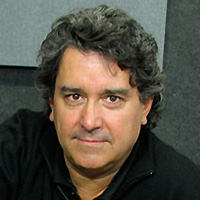A healthy society needs limits to help keep things in order. Posted speed limits, even though rarely adhered to, provide a guideline so that when we do “push the limit,” we do so with a baseline reference. I vacation in Mexico every year, and although a majority of drivers are very respectful, it always amazes me to see some – cabbies in particular – who go through red lights and/or pass on the right using the service lane. In fact, my wife and I witnessed a T-bone crash right in front of us last month as a driver ran a red light.
When rearing children, it’s important that we set limits such as how late they can stay up, how far they can wonder off on their own, the appropriate drinking and driving age and even the use of swearwords. I’m not a fan of legalizing drugs, not because I give a hoot about who does what; rather, it’s more about the lack of limits. Marijuana today is so powerful, yet many seem to believe they can still function relatively normally when stoned. And if pot is what the old folks smoke, what drugs will youthful rebels turn to instead?
Double-Edged Sword
Banks set limits everywhere by calculating risk. Your Visa card is a perfect example. The better you are at keeping the account current, the higher the spending limit they will authorize. This is a double-edged sword: For the consumer, it provides greater cash-flow flexibility, and each time you use the card, it increases revenues for the bank. The dark side rears its ugly head when using the card to pay off other debts. Many of us (unfortunately) know how this strategy can spiral out of control.
In the business world, banks provide us with working capital in the form of a credit line that buffers the ups and downs of payments and receivables. It astonishes me when I hear a business owner say that he or she hates banks! Usually, this comes from a bad experience whereby a bank didn’t extend a loan in a time of need.
One must understand banks in order to appreciate their position. Banks are not there to take risks; they exist to make money. High risk is the domain of the venture capitalist. VCs will inject cash into a business at 10 to 15 percent interest or assume a percentage of ownership. Banks lend money at 1.5 to 3 percent above the posted prime rate but expect the borrower to provide a guarantee of repayment in the form of a second position on an asset such as a home. Get past it.
In both cases, the lenders require monthly financial reports that detail income, expenses, inventory, payables and receivables. This allows the lender to monitor the progress of borrowers while ensuring that they’re working within set financial limits.
I’m a huge advocate of setting yearly budgets and the discipline that goes along with proper financial reporting. If ever you intend to sell your company, one of the most important elements you can bring to the table is to show a perspective buyer that the company is run as if it were 10 times bigger than it actually is. The same applies when seeking a bank loan. If you can show the bank that you’re one top of the numbers, it builds trust.
Accentuating The Positive
Back in the mid 1990s, the folks from a bank we worked with came to our office and told us that they were calling our loan. I was devastated. We were profitable and things were going relatively well, so I couldn’t understand why.
The “apparent” decision in this case had nothing to do with how we were running the company, rather, the bank’s head office had revised its business plan and decided to eliminate all customers below a certain threshold. I immediately organized meetings with three other banks and made sure that our accountant and comptroller were sitting right next to me at the negotiation table.
Banks want to be comfortable with their decision making, and if they see that you have a team that can self-regulate, it goes a long way toward building trust. Our comptroller would project monthly cash flow requirements and when things got tight, I’d call the bank manager to let him know that we might need a temporary bump because we may exceed our credit limit. I don’t know if we ever actually did exceed it, but keeping the manager informed showed we were on top of our game.
Banks have a huge advantage over VCs in that they have no interest in owning part of a company. I grew Radial from nothing, and because I was the sole owner, I didn’t have to answer to anyone when I made a decision. I was responsible for the good, the bad and the ugly.
The single biggest mistake I (often!) made was launching a product line or endeavor without allocating proper resources. For instance, when I decided to purchase Hafler and Dynaco to diversify the company into the world of hi-fi, I tried to piecemeal the project together instead of hiring a full-time sales manager and a team of reps. The lack of resources resulted in a lack of sales.
Cause & Effect
Limits also apply to audio. We all know that pushing the limits of an amplifier creates distortion, yet we hear it all the time. It astounds me that so many who work in live sound have the belief that turning it up to the point of pain automatically makes the crowd happy.
Human hearing is amazing in that our ears will automatically compress when subjected to extraordinary sound pressure levels. This results in ringing in our ears, and in severe cases, tinnitus may ensue. Some of the loudest concerts I’ve ever attended featured the “usual suspects” (hard rock and metal artists), but surprisingly, the loudest of them all was by a very popular country artist.
The backstory is that a manufacturer had just announced a new line array system and the tour was being used to showcase it to local audio engineers. I was at front of house and couldn’t believe the excruciating pain.
I recall a person with a dB meter on his phone and it was displaying sound pressure levels that exceeded 104 dBA.
Keep in mind that we were 50 meters (150 feet) away from the loudspeakers! I don’t pretend to know the actual math but based on a 6 dB increase with each halving of distance, one can assume the PA was generating 130 to 140 dBA at 1 meter.
How did the show sound? I have no idea. I left. It was a situation that could have sorely benefitted from some limits.















